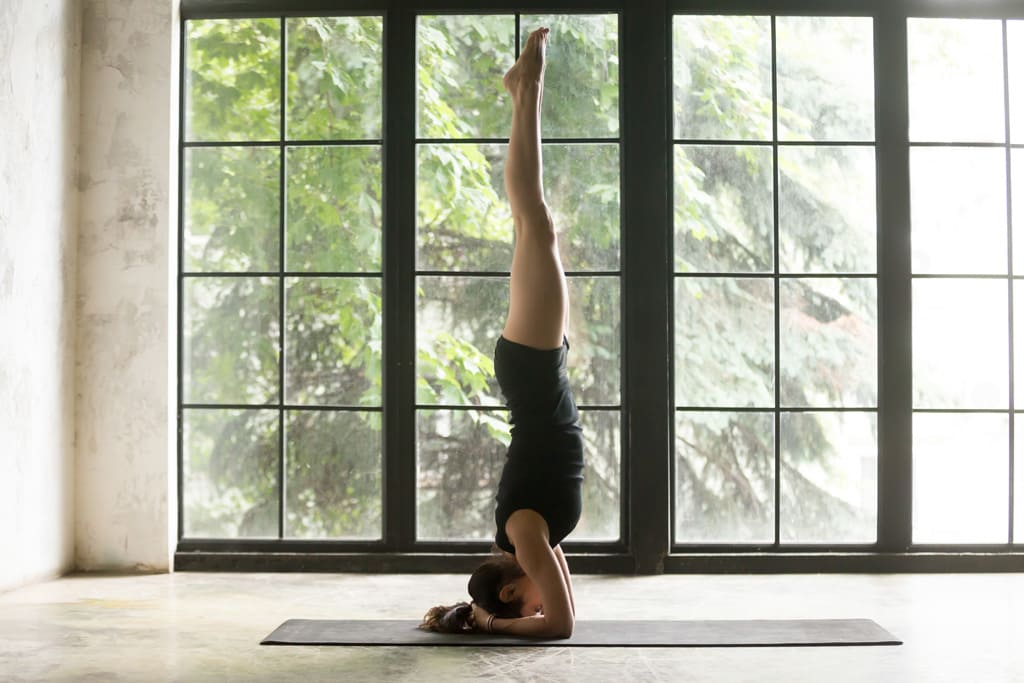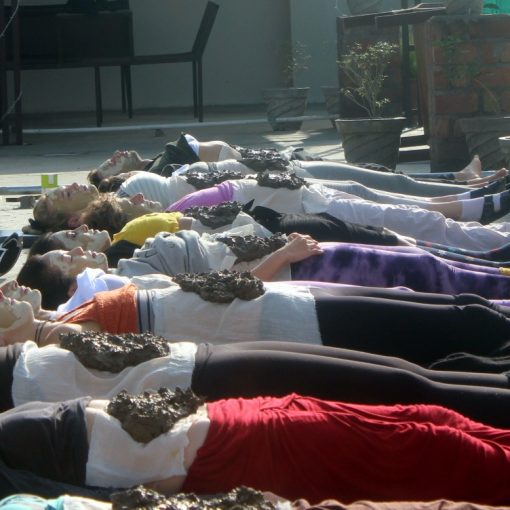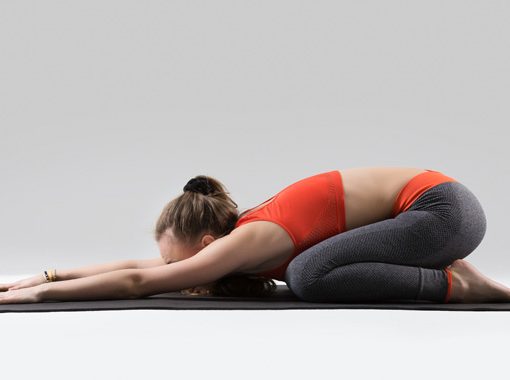Are you looking to challenge your yoga practice and take it to new heights? If so, Shirshasana, also known as the Headstand Pose, might be just what you need. This inversion posture not only brings a sense of accomplishment but also offers a range of physical and mental benefits. In this blog, we will explore how to perform Shirshasana safely and effectively, along with its precautions and benefits. So, roll out your mat, find a quiet space, and let’s dive into the world of Shirshasana!

Understanding Shirshasana (Headstand Pose)
What is Shirshasana?
Shirshasana is an advanced yoga pose that involves balancing the body on the head and forearms while the legs are extended upwards. It is often referred to as the “King of Asanas” due to its challenging nature and the myriad benefits it offers. In this pose, the entire body is inverted, reversing the usual effects of gravity and providing a unique perspective on the world.
History and Significance of Shirshasana
The practice of Shirshasana dates back centuries and has been a part of traditional yoga systems. In ancient yogic texts, it is believed that Shirshasana stimulates the “crown chakra,” which is associated with higher consciousness and spiritual awakening. Additionally, this pose was considered a means to cultivate focus, control the mind, and achieve mental clarity.
Preparing for Shirshasana
Before attempting Shirshasana, it is essential to prepare yourself physically and mentally to ensure a safe and enjoyable experience.
Physical readiness
Shirshasana requires a reasonable level of upper body strength, core stability, and flexibility. Regular practice of other yoga poses, such as Downward Dog, Plank Pose, and Dolphin Pose, can help strengthen the muscles needed for a successful Headstand. It is advisable to develop a consistent yoga practice and gradually build up the required strength and stability before attempting this advanced pose.
Mental preparation
Inversions can be mentally challenging, especially when the perspective is flipped upside down. It is crucial to cultivate a calm and focused mind before attempting Shirshasana. Practicing breathing exercises, meditation, and mindfulness can help develop mental clarity, reduce fear or anxiety, and enhance concentration.
A step-by-step guide to performing Shirshasana
Now that you are physically and mentally prepared, let’s explore the step-by-step process of performing Shirshasana.
Finding the right space
Choose a well-lit and spacious area for your practice. Ensure that there are no objects nearby that may cause harm during the pose. Ideally, you should have enough room to extend your legs fully without any obstructions.
Using props if needed
If you are new to Shirshasana or need additional support, using props can be beneficial. A yoga mat, folded blanket, or padded surface can provide cushioning for your head and forearms. Additionally, a wall or a qualified instructor can offer support and stability during the initial stages of practicing the pose.
Getting into pose
- Begin in a kneeling position with your knees hip-width apart.
- Interlace your fingers and place your forearms on the ground, creating a triangular shape with your hands.
- Place the crown of your head on the mat, cradled by your hands, forming a stable base.
- Lift your hips and walk your feet closer to your body, creating an inverted “V” shape.
- Slowly start to lift one leg off the ground, bending the knee toward your chest.
- As the first leg lifts, engage your core and lift the other leg, extending both legs fully toward the ceiling.
- Maintain a straight line from your wrists to your hips and legs.
- Find your balance and focus on maintaining a steady breath.
Maintaining balance and alignment
To maintain balance and proper alignment in Shirshasana, keep the following tips in mind:
- Engage your core muscles to stabilize your body.
- Lengthen your spine, avoiding any excessive rounding or arching.
- Distribute your weight evenly between your head, forearms, and shoulders.
- Relax your neck and gaze softly toward your toes.
- Breathe steadily and avoid holding your breath.
Precautions and safety measures
While Shirshasana can be an invigorating and transformative pose, it is important to approach it with caution and respect for your body’s limits.
Health considerations
If you have any pre-existing medical conditions, such as high blood pressure, neck or back injuries, glaucoma, or heart problems, it is crucial to consult a healthcare professional before attempting Shirshasana. They can provide specific guidance based on your individual circumstances.
Avoiding common mistakes
To ensure safe and effective practice, be mindful of these common mistakes when performing Shirshasana:
- Using excessive force or momentum to enter or exit the pose.
- Arching or rounding the back excessively can strain the neck and spine.
- Holding the breath or breathing shallowly. Maintain a smooth, even breath throughout the pose.
- Overstraining the neck by looking up too much or collapsing the head onto the floor.
Seeking guidance from a qualified instructor
If you are new to Shirshasana or have concerns about your form, it is highly recommended to seek guidance from a qualified yoga instructor. They can provide personalized instruction, help you refine your alignment, and offer modifications or alternatives based on your abilities.
Benefits of practicing Shirshasana
The regular practice of Shirshasana can have a profound impact on both the body and mind. Let’s explore some of the benefits associated with this powerful pose.
Physical benefits
- Improved circulation: Inverting the body increases blood flow to the brain, enhancing oxygen and nutrient supply to this vital organ.
- Strengthened upper body: Shirshasana engages the shoulders, arms, and core muscles, helping to build strength and stability in these areas.
- Enhanced balance: Balancing on the head and forearms challenge the body’s equilibrium, improving overall balance and proprioception.
- Spinal health: The inversion gently decompresses the spine, reducing strain and promoting spinal health.
- Increased energy and vitality: Shirshasana is believed to stimulate the endocrine system and invigorate the body, leaving you feeling rejuvenated.
Mental and emotional benefits
- Improved focus and concentration: The inverted position of Shirshasana promotes blood flow to the brain, enhancing cognitive function, focus, and mental clarity.
- Stress reduction: The pose activates the parasympathetic nervous system, promoting relaxation and reducing stress and anxiety.
- Increased self-confidence: Mastering Shirshasana can boost self-esteem and confidence by overcoming mental and physical obstacles.
- Emotional balance: Inversion can help shift perspective and bring a sense of calmness and emotional balance.
Conclusion
Shirshasana, the Headstand Pose, offers a transformative journey for those seeking to deepen their yoga practice. By following the step-by-step guide, being mindful of precautions, and understanding the benefits, you can explore this powerful inversion with confidence. Remember to approach the pose with respect for your body’s limitations and seek guidance from a qualified instructor if needed. Embrace the physical and mental rewards that Shirshasana brings and enjoy the journey of self-discovery through this majestic pose.
Frequently Asked Questions:-
Can anyone do Shirshasana?
Shirshasana is an advanced pose that requires a certain level of physical strength and stability. Beginners or individuals with certain medical conditions should approach it with caution or seek guidance from a qualified instructor.
How long should one hold the Headstand Pose?
It is recommended to start with shorter durations, such as 30 seconds to 1 minute, and gradually increase the duration as you build strength and confidence. Listen to your body and avoid pushing beyond your limits.
Are there any alternatives to Shirshasana?
Yes, if Shirshasana is not accessible or suitable for you, there are alternative poses that offer similar benefits. Dolphin Pose, Legs-Up-The-Wall Pose, or Supported Headstand against a wall can be practiced as alternatives.
Can Shirshasana help with hair growth?
While Shirshasana promotes blood flow to the scalp, which may indirectly benefit hair health, it is not a guaranteed solution for hair growth. Hair growth is influenced by various factors, including genetics, diet, and overall health.
What should I do if I feel dizzy during the pose?
If you experience dizziness or discomfort during Shirshasana, come out of the pose gently and rest in Child’s Pose or a comfortable resting position. Avoid forcing yourself to continue if you feel unwell. Consulting a healthcare professional is advisable if dizziness persists.





